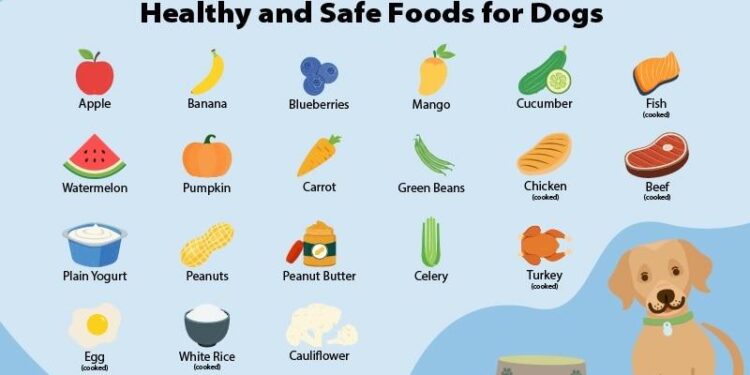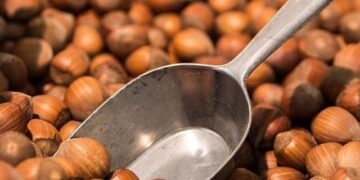Table of Contents
My Professional Dilemma: When “Best Practice” Wasn’t Good Enough
For fifteen years, my professional life has revolved around a single, unwavering principle: the health and well-being of animals.
As a veterinary nutritionist, my days are spent in consultation rooms, poring over scientific literature, and crafting dietary plans designed to give my clients’ pets the longest, healthiest lives possible.
I’ve always prided myself on providing advice grounded in evidence, recommending premium, science-backed foods that meet the rigorous standards set by industry bodies like the European Pet Food Industry Federation (FEDIAF).1
The cornerstone of this advice, for most dogs, has been a high-quality extruded kibble.
Yet, for all my professional confidence, a quiet frustration was brewing at home.
My own dog, a wonderfully goofy and endlessly loving Labrador named Barney, was my personal paradox.
Labradors, as a breed, are predisposed to certain health challenges, including obesity and joint problems like hip dysplasia, making their diet a matter of critical importance.3
I was doing everything by the book.
Barney was fed a top-tier, vet-recommended extruded kibble.
His portions were meticulously measured.
He was exercised daily.
According to every metric I used in my professional life, he should have been the picture of vitality.
But he wasn’t.
His coat, which should have been a glossy black, was perpetually dull.
He was plagued by a persistent, low-grade itchiness that led to frequent scratching and irritated skin.
His digestion was unpredictable, often resulting in loose stools that defied easy explanation.
He had energy, yes, but not the vibrant, boundless joy I knew he was capable of.
These weren’t acute, life-threatening illnesses, but a collection of chronic, nagging issues that are distressingly common among UK dogs.4
They were the very same problems my clients described, the ones that often left them feeling helpless despite following all the “standard advice”.6
Barney was surviving, but he wasn’t thriving.
And for me, that wasn’t good enough.
This gap between the expected outcome of a “complete and balanced” diet and the reality in his food bowl became a professional and personal obsession.
It forced me to question the very foundation of the advice I had been giving for over a decade and sent me on a journey to understand what might be hidden in plain sight, right inside the kibble itself.
The Hidden Problem in the Bowl: Deconstructing Conventional Kibble
My investigation began not with ingredients, but with process.
The vast majority of dry dog foods on the market—around 95%—are produced through a method called extrusion.7
It’s an efficient, cost-effective industrial process that has dominated the pet food industry for decades.
The process is intense.
A mixture of ingredients, often including pre-processed meat meals, grains, and vegetable powders, is ground into a dough.
This dough is then forced into a machine called an extruder, where it is subjected to extreme conditions: high pressure and searing temperatures, often reaching between 120°C and over 140°C.8
As the super-heated, pressurized dough exits the extruder through a die, it rapidly expands and is sliced into the familiar, uniform shapes of kibble.
The primary justification for this high-heat process is food safety; it effectively kills potential pathogens like bacteria, ensuring a long and stable shelf life.11
However, my research revealed a significant and troubling consequence of this thermal violence.
The very same heat that sterilizes the food also degrades or destroys many of its most valuable natural nutrients.
Heat-sensitive vitamins, delicate enzymes, and crucial healthy fats like omega-3s simply cannot withstand such high temperatures.8
This creates a fundamental contradiction at the heart of conventional kibble.
To compensate for the nutrients lost during processing, manufacturers must artificially “fortify” the food after it has been cooked.
A coating of synthetic vitamins, minerals, and fats is sprayed onto the finished, sterile pellets to ensure they meet the legal definition of a “complete and balanced” diet as mandated by bodies like FEDIAF.8
What many pet owners believe they are buying—a food that is nutritious because of its wholesome ingredients—is often a product whose nutritional completeness depends heavily on this synthetic, post-production application.
This engineering extends to flavour.
The intense heat also diminishes the natural taste and aroma of the core ingredients.7
To make the food appealing to dogs, a “palatant,” typically a spray-on animal fat or flavour digest, is added.7
A dog’s enthusiasm for their dinner, therefore, might not be a testament to the quality of the chicken or fish within, but rather to the allure of this flavour enhancer.
The physical nature of the kibble was equally concerning.
A simple experiment, often cited by critics of extrusion, brought the issue to life.
If you place a handful of extruded kibble in a glass of water, it tends to absorb the liquid, swell up, and float.13
This mimics its behaviour in a dog’s stomach, where it can expand and sit for a long time, potentially contributing to feelings of discomfort and, in the worst cases, increasing the risk of bloating—a life-threatening condition, particularly in deep-chested breeds.3
This visual was a powerful metaphor for the disconnect between this highly processed food and a dog’s natural digestive process.
The Epiphany: A Lesson from a Chef’s Kitchen
The pieces of the puzzle were there, but they hadn’t yet formed a clear picture.
The turning point—my epiphany—came from a seemingly unrelated field: gastronomy.
During a conversation with a chef friend, we discussed different methods of cooking a steak.
He explained the contrast between traditional high-heat grilling and the more modern technique of sous-vide.
Suddenly, my entire understanding of dog food manufacturing was reframed.
I came to see the two main types of dry dog food through this culinary lens:
- Extruded Kibble is the Well-Done Burger. It is cooked at a very high temperature. This method is fast, efficient, and guarantees food safety by killing any potential pathogens. It gets the job done. However, this aggressive cooking fundamentally alters the final product. It drives out moisture, toughens the texture, and diminishes the subtle, nuanced flavours of the original high-quality ingredients. The end result is functional and sterile, but its inherent quality has been compromised by the very process used to create it.
- Cold-Pressed Food is the Sous-Vide Steak. This technique involves cooking the steak gently in a water bath at a low, precisely controlled temperature for a longer period. The goal is not simply to cook the meat, but to do so in a way that preserves its natural integrity. The sous-vide method retains the steak’s moisture, results in a perfectly tender texture, and locks in its deep, natural flavour. It is just as safe as the high-heat method, but its entire philosophy is different. It prioritizes optimizing the inherent quality of the ingredients, not just sterilizing them.
This analogy was a revelation.
The debate wasn’t about safe versus unsafe food; both methods produce a safe, sterile product.
The real difference lay in the manufacturing philosophy.
Extrusion is rooted in a model of industrial efficiency, where the primary goal is mass production and sterilization.
Cold-pressing, I was beginning to realize, represented a different philosophy entirely—one focused on preserving the nutritional and structural integrity of the food itself.
It shifted the objective from simply preventing disease by creating a sterile, fortified product, to actively promoting health by delivering nutrients in their most natural and bioavailable form.
The Science of “Sous-Vide” for Dogs: A Deep Dive into Cold-Pressed Nutrition
Armed with this new perspective, I delved into the science of cold-pressed dog food.
The process, as its name suggests, is far gentler than extrusion.
High-quality ground ingredients are mixed and then pressed together under significant pressure but at very low temperatures, typically ranging from 40°C to 80°C.8
This minimal heat treatment is the key to its advantages.
The Benefits of a Gentler Process
My research confirmed that the “sous-vide” philosophy held up to scientific scrutiny, yielding several key benefits:
- Higher Nutritional Value: By avoiding the destructive high temperatures of extrusion, the cold-pressing process preserves more of the natural goodness of the ingredients. Heat-sensitive vitamins, natural enzymes, and essential fatty acids like Omega-3 and Omega-6 remain intact and bioavailable, supporting everything from skin and coat health to immune function.8
- Improved Digestibility: The “water glass test” for cold-pressed food yields a dramatically different result. Instead of swelling and floating, the dense pellets break down gently from the outside in, dissolving in the water.13 This behaviour translates to the stomach, where the food is more easily and quickly digested. This reduces the risk of bloating and digestive discomfort, making it an excellent option for dogs with sensitive stomachs.18
- Enhanced Palatability: Because the natural flavours and aromas of the ingredients are not cooked away, cold-pressed food is often more enticing to dogs, particularly fussy eaters, without the need for artificial palatant sprays.17
- A Bridge to Raw Feeding: For owners interested in the benefits of a raw diet but deterred by the cost, freezer space, or safety concerns, cold-pressed food offers the closest dry alternative.7 Because it breaks down at the same rate as raw food, it can even be fed alongside it in the same meal—something that should never be done with extruded kibble.21
A Balanced View: The Drawbacks and Nuances
No food is perfect, and a responsible analysis requires acknowledging the potential downsides and complexities of cold-pressed food.
- Shorter Shelf Life: The gentler process and lack of high-heat sterilization mean that cold-pressed food typically has a shorter shelf life, often around 6 months, compared to the 12-18 months of many extruded kibbles.21 This requires more careful planning and storage.
- Higher Cost: The manufacturing process can be more expensive, and the emphasis on higher-quality ingredients often results in a higher price per bag.24
- Digestive Adjustment: While excellent for many sensitive dogs, some sources note that because the carbohydrates in cold-pressed food are not broken down by high heat, a small number of dogs may initially experience digestive upset, like looser stools, as their system adapts.23 This underscores the importance of a slow, gradual transition.
Beyond these practical considerations, my research uncovered two critical nuances that separate good cold-pressed foods from great ones.
First is the “Meat Meal Asterisk.” The term “cold-pressed” refers only to the final stage of pressing the pellets.
A crucial question to ask is: what is the primary protein source before it gets pressed? Many brands use “dried meat meal” (e.g., chicken meal, lamb meal).
By law, meat meal is produced via a high-heat rendering process to remove water and fat.23
If a food’s main ingredient is already a pre-cooked meal, the nutritional benefits of the final cold-pressing stage are limited to protecting the other, more delicate ingredients like oils and botanicals.
However, a few premium brands use fresh, raw meat as their starting point, meaning the
entire product benefits from the low-temperature philosophy.26
This is a significant distinction in nutritional integrity.
Second is the need to contextualize the grain-free debate. Many cold-pressed foods are formulated to be grain-free, often using legumes (peas, lentils) and potatoes as carbohydrate sources.27
It is important for owners to be aware of the FDA’s ongoing investigation into a potential, though not definitively proven, link between some grain-free diets high in these ingredients and a heart condition called canine dilated cardiomyopathy (DCM).29
While the science remains complex and inconclusive, it highlights that a superior manufacturing process (cold-pressing) does not automatically excuse a potentially unbalanced formulation.
A beneficial process and a thoughtful, well-balanced recipe must go hand-in-hand.
The UK Cold-Pressed Market: A Veterinarian’s Brand-by-Brand Analysis
With a solid theoretical framework in place, it was time to apply it to the real world.
I began a comprehensive review of the leading cold-pressed brands available in the UK, analyzing them as if I were choosing a new food for Barney and for my most discerning clients.
I examined their company philosophies, their ingredient transparency, their nutritional data, and what real customers were saying about them.
My goal was to move beyond marketing claims and evaluate each brand against the key criteria I had identified: the nature of their protein source (fresh meat vs. meat meal), the overall nutritional balance, their suitability for different types of dogs, and their value proposition.
The following table summarises my findings, providing a clear, comparative snapshot of the market.
The UK Cold-Pressed Dog Food Comparator
| Brand | Key Philosophy / USP | Primary Meat Source | Protein % | Fat % | Fibre % | Est. Price/kg (10kg bag) | Veterinarian’s Note |
| Wilsons | Scottish heritage; wide range; can be mixed with raw food 22 | Dried Ground Meat (Meal) 31 | ~24-26% | ~14% | ~2.5-3% | ~£6.50-£6.90 31 | Excellent variety for multi-dog households or allergy trials. The ability to mix with their raw food is a huge practical plus. |
| Forthglade | Vet-approved; focus on gut health; natural ingredients 28 | Dried Ground Meat (Meal) 28 | ~26% | ~12% | ~4.9% | ~£7.00-£8.00 28 | Strong choice for sensitive stomachs. The explicit vet approval and high fibre content provide extra peace of mind for digestive health. |
| Walker & Drake | High meat content; UK-made; allergy-focused dual-protein lines 27 | Dried Meat (Meal) 35 | ~26-28% | ~12-14% | ~3-4% | ~£5.80-£6.20 27 | Great value for a high-meat-content food. Their innovative dual-protein recipes are a smart approach for managing intolerances. |
| DARF | Raw-alternative; uses fresh raw meat, not meal; gluten-free 26 | Fresh Raw Meat (e.g., Chicken Necks, Beef, Lamb) 38 | ~24% | ~10% | ~3% | ~£4.00-£4.50 38 | The ingredient purist’s choice. Using fresh, raw meat instead of pre-cooked meal is a significant differentiator that maximizes nutritional integrity. |
| Wild Pet Food | Ancestral 80:20 diet; very high protein; raw alternative 39 | Dried Ground Meat (80% content) 40 | ~37-40% | ~17-18% | ~3-4% | ~£8.00-£9.00 41 | Best for highly active, working, or sporting dogs that require a very high-protein, high-energy diet that mimics a raw 80:20 model. |
The Verdict and My Recommendations
After weeks of research and careful consideration, I made my choice for Barney.
I selected a food that aligned with the “sous-vide” principle in its purest form.
The results were nothing short of transformative.
Within a month, the chronic itchiness that had plagued him for years subsided.
His coat became thick, soft, and deeply glossy.
His digestion became reliably firm and regular.
Most importantly, the spark returned to his eyes.
He had a new level of energy and vitality that was a joy to witness.
My professional paradox was resolved, and my beloved companion was finally thriving.
This journey taught me that there is no single “best” dog food.
The right choice depends on a dog’s individual needs and an owner’s priorities and lifestyle.
Based on my comprehensive analysis, here are my tiered recommendations for different types of dogs and owners in the UK:
Best Overall for Balanced Nutrition & Integrity: DARF
For the owner who prioritizes nutritional purity above all else, DARF is the standout choice.
Their commitment to using fresh, raw meat as the starting ingredient, rather than pre-cooked meat meal, makes them the truest to the cold-pressed philosophy.26
This ensures that the entire product, not just the added fats and botanicals, benefits from the gentle, low-temperature process.
It represents the pinnacle of nutritional integrity in a dry food format and is an excellent alternative for those considering a raw diet.
Best for Sensitive Stomachs & Cautious Owners: Forthglade
For owners of dogs with sensitive digestion, or for those who feel more secure with explicit veterinary endorsement, Forthglade is an exceptional option.
Their formulas are specifically designed to promote good gut health, often with higher fibre content, and their “Vet Approved” status provides an extra layer of reassurance.28
They offer a reliable, gentle, and trustworthy entry point into the world of cold-pressed feeding.
Best for High-Performance & Active Dogs: Wild Pet Food
For dogs with high energy demands—such as working breeds, canine athletes, or exceptionally active companions—Wild Pet Food is tailor-made.
Their 80:20 ancestral diet formulation delivers a very high level of protein and fat, designed to fuel muscle development and provide sustained energy.39
This is a specialist food for dogs who need more than a standard maintenance diet to perform at their peak.
Best Value for Quality: Walker & Drake
For the budget-conscious owner who refuses to compromise on quality, Walker & Drake strikes an impressive balance.
They offer a high-meat-content food, proudly made in the UK, at a very competitive price point.27
Their innovative dual-protein and small-breed lines also show a commitment to addressing specific canine needs, making them a smart and accessible choice for a wide range of dogs.
The Transition Plan: How to Safely Switch Your Dog’s Diet
Switching to a new food, especially one with a different density and composition like cold-pressed, should always be done carefully to avoid digestive upset.
The key is a slow, gradual introduction over a period of 7 to 10 days.20
Here is the simple, step-by-step plan I recommend to all my clients:
- Days 1-3: Replace 25% of your dog’s old food with the new cold-pressed food. Serve this as 75% old food and 25% new food mixed together in their bowl.
- Days 4-6: Increase the new food to 50%, creating a half-and-half mixture of old and new.
- Days 7-9: Move to 75% new food and just 25% of the old food.
- Day 10 onwards: If all is well, you can now feed 100% of the new cold-pressed food.
Throughout this transition, it’s important to monitor your dog closely.
Pay attention to their stool consistency (it should remain firm), energy levels, and overall demeanor.
If you notice any prolonged digestive issues, slow down the transition and give their system more time to adapt.
A helpful tip, particularly for puppies, senior dogs with dental issues, or notoriously fussy eaters, is to add a splash of warm water to the cold-pressed pellets a few minutes before serving.22
This softens them slightly and enhances their natural aroma, making them even more palatable.
One of the most significant practical advantages of cold-pressed food is its “mixability.” Unlike extruded kibble, which digests at a different rate from fresh or raw food, cold-pressed breaks down in the stomach in a similar way to raw.21
This unique property makes it an incredibly flexible tool for the modern dog owner.
You can safely mix it in the same bowl with raw food, use it as a convenient dry meal for travel days while feeding raw at home, or use it to add a crunchy, nutritious topper to a wet food diet.
This flexibility allows for a more varied and practical feeding strategy that can fit seamlessly into any lifestyle.
Conclusion: From Surviving to Thriving
Barney’s journey was more than just a search for a better dog food; it was a catalyst for a fundamental shift in my professional philosophy.
It forced me to look beyond the reassuring labels of “complete and balanced” and to critically examine the industrial processes we use to create the very foundation of our companions’ health.
The conventional model of pet nutrition has been remarkably successful at its primary goal: preventing the overt deficiency diseases that were common in generations past.
By creating sterile, fortified foods, the industry has established a baseline of adequacy that allows our dogs to survive.
But my experience with Barney, and with countless clients’ dogs, has convinced me that we must aim higher.
The rise of minimally processed foods like cold-pressed represents an evolution in our thinking.
It is a move away from a model focused simply on preventing disease and towards a new paradigm focused on promoting vitality.
It is about providing nutrition in a form that a dog’s body can recognize and utilize most effectively, preserving the delicate, complex integrity of whole-food ingredients.
It is, ultimately, the difference between a dog that is merely surviving and one that is truly, joyfully, thriving.
Works cited
- Nutritional Guidelines | FEDIAF, accessed August 12, 2025, https://europeanpetfood.org/self-regulation/nutritional-guidelines/
- Nutritional Requirements – FEDIAF, accessed August 12, 2025, https://europeanpetfood.org/pet-food-facts/nutritional-requirements/
- Common Health Problems in Popular Dog Breeds Pet Insurance Post Office, accessed August 12, 2025, https://www.postoffice.co.uk/pet-insurance/guides/common-health-problems-in-popular-dog-breeds
- 7 Common dog illnesses that are affected by poor nutrition – Pure …, accessed August 12, 2025, https://www.purepetfood.com/blog/7-common-dog-illnesses-that-are-affected-by-poor-nutrition
- 10 signs your pet’s diet is WRONG – Zenoo, accessed August 12, 2025, https://myzenoo.co.uk/pages/10-signs-your-pet-s-diet-is-wrong
- Welfare of dogs: the need for a suitable diet | nidirect, accessed August 12, 2025, https://www.nidirect.gov.uk/articles/welfare-dogs-need-suitable-diet
- The Ultimate Guide to Cold-Pressed Dog Food – Nextrition Pet, accessed August 12, 2025, https://www.nextritionpet.com/blogs/nutrition/dog-diet-nutrition-guide-goldendoodles
- Why People are Switching Their Pets to Cold-Pressed From Regular Extruded Kibble, accessed August 12, 2025, https://sabrepetfood.co.uk/blogs/blog/why-people-are-switching-their-pets-to-cold-pressed-from-regular-extruded-kibble
- Why People are Switching Their Pets to Cold-Pressed From Regular Extruded Kibble, accessed August 12, 2025, https://sabrepetfood.com/blogs/news/why-people-are-switching-their-pets-to-cold-pressed-from-regular-extruded-kibble
- What is Dry Extruded Dog Food and How Does It Affect Your Pet’s Health? | Houndsy, accessed August 12, 2025, https://www.houndsy.com/blogs/modern-tails/what-is-dry-extruded-dog-food-and-how-does-it-affect-your-pets-health
- Is Extruded Dog Food Good? Pros & Cons Unveiled – Darin Machinery, accessed August 12, 2025, https://petreatsmachine.com/extruded-dog-food-benefits/
- The safety of pet food | FEDIAF, accessed August 12, 2025, https://europeanpetfood.org/pet-food-facts/fact-sheets/quality-and-safety/the-safety-of-pet-food/
- What Is Cold-Pressed Dog Food? – James & Ella, accessed August 12, 2025, https://ella.co/blog/what-is-cold-pressed-dog-food
- The Ultimate Guide to Cold Pressed Dog Food – Only Natural Pet, accessed August 12, 2025, https://www.onlynaturalpet.com/blogs/holistic-healthcare-library/the-ultimate-guide-to-cold-pressed-dog-food
- Kibble vs Cold Pressed Dog Food: what’s the difference – THE CANINE CODE, accessed August 12, 2025, https://www.thecaninecode.co.uk/blog/kibble-vs-cold-pressed-dog-food
- The Truth About Cold Pressed Dog Food – Scrumbles, accessed August 12, 2025, https://scrumbles.co.uk/blogs/dog/the-truth-about-cold-pressed-dog-food
- What is cold pressed dog food and what are the benefits? – Chester & Morley, accessed August 12, 2025, https://chesterandmorley.co.uk/blogs/news/what-is-cold-pressed-dog-food-and-what-are-the-benefits
- Baked vs Extruded vs Cold Pressed Dog Food – Forthglade, accessed August 12, 2025, https://forthglade.com/blogs/all-blogs/baked-vs-extruded-dog-food-vs-cold-pressed
- Cold-Pressed vs dry extruded Dog Food – What’s Best for Your Dog? – Timmy’s Pet Shop, accessed August 12, 2025, https://timmyspetshop.ie/cold-pressed-vs-dry-extruded-dog-food-whats-the-difference-which-is-better/
- The Ultimate Guide To Cold Pressed Dog Food – Decs Pets, accessed August 12, 2025, https://decspets.ie/insights/the-ultimate-guide-to-cold-pressed-dog-food/
- What Is Cold Pressed Dog Food? | Forthglade, accessed August 12, 2025, https://forthglade.com/blogs/all-blogs/what-is-cold-pressed-dog-food
- Feeding cold pressed dog food – Wilsons Pet Food, accessed August 12, 2025, https://www.wilsonspetfood.co.uk/blogs/blog/feeding-cold-pressed-dog-food
- What are the disadvantages of cold-pressed feed? – Dr. Berg Pet food, accessed August 12, 2025, https://www.dr-berg-tiernahrung.de/answer/what-are-the-disadvantages-of-cold-pressed-feed.aspx
- Raw Dog Food vs. Grain-Free Dog Food vs. Cold-Pressed Dog Food – The Pet Parlour, accessed August 12, 2025, https://petparlour.ie/raw-dog-food-vs-grain-free-dog-food-vs-cold-pressed-dog-food-a-comprehensive-guide-for-dog-owners/
- Raw, Kibble, Fresh, or Cold Pressed: What’s Best for Your Dog? – Nextrition Pet, accessed August 12, 2025, https://www.nextritionpet.com/blogs/nutrition/raw-kibble-fresh-or-cold-pressed-what-s-best-for-your-dog
- DARF – Dog Meats Bone, accessed August 12, 2025, https://www.dogmeatsbone.co.uk/collections/darf
- Walker & Drake Cold Pressed Dog Food, accessed August 12, 2025, https://www.walkeranddrake.com/pages/dog-food
- Cold Pressed Dog Food | Grain Free & Natural | Forthglade, accessed August 12, 2025, https://forthglade.com/collections/range-cold-pressed-dry-food
- FDA Investigation into Potential Link between Certain Diets and Canine Dilated Cardiomyopathy, accessed August 12, 2025, https://www.fda.gov/animal-veterinary/outbreaks-and-advisories/fda-investigation-potential-link-between-certain-diets-and-canine-dilated-cardiomyopathy
- Unleashing the Goodness: Best Dry Dog Foods – Smart Bark, accessed August 12, 2025, https://www.smartbark.co.uk/post/best-dry-dog-foods
- Premium Cold Pressed Dog Food | It’s Not Kibble – Wilsons Pet Food, accessed August 12, 2025, https://www.wilsonspetfood.co.uk/collections/cold-pressed-dog-food
- Duck Cold Pressed Natural Dry Dog Food | Forthglade, accessed August 12, 2025, https://forthglade.com/products/duck-grain-free-cold-pressed-natural-dry-dog-food
- Cold Pressed Natural Dry Dog Food – 2kg – Forthglade, accessed August 12, 2025, https://forthglade.com/products/grain-free-cold-pressed-natural-dry-dog-food-2kg
- REVIEW: Walker & Drake Cold Pressed Dog Food | Your Pets Daily, accessed August 12, 2025, https://www.yourpetsdaily.co.uk/review/review-walker-drake-cold-pressed-dog-food
- Walker and Drake 12kg Cold Pressed Working Dog Food – Chicken with Rice, accessed August 12, 2025, https://www.walkeranddrake.com/products/12kg-cold-pressed-working-dog-food-chicken-with-rice
- Walker & Drake Reviews – Read 187 Genuine Customer Reviews | walkeranddrake.com, accessed August 12, 2025, https://www.reviews.co.uk/company-reviews/store/walker-and-drake
- DARF Cold Pressed Dog Food – Sabre Pet Food, accessed August 12, 2025, https://sabrepetfood.co.uk/collections/darf-cold-pressed-dog-food
- DARF Cold Regular Pressed Dog Food – Fetch Your Pet Needs, accessed August 12, 2025, https://www.fetchyourpetneeds.ie/products/darf-cold-regular-pressed-dog-food
- WILD Pet Food | Coldpressed raw dog food alternative, accessed August 12, 2025, https://wildpetfood.co.uk/
- Wild Cold Pressed BEEF 80/20 2.5kg, accessed August 12, 2025, https://www.wild-tails.com/product/wild-pet-food-beef-80-20-cold-pressed-dry-dog-food-2-5kg/
- Wild Pet Food Review : The Dry Alternative to a Raw Diet for Dogs | Smart Bark, accessed August 12, 2025, https://www.smartbark.co.uk/post/wild-pet-food-review
- decspets.ie, accessed August 12, 2025, https://decspets.ie/insights/the-ultimate-guide-to-cold-pressed-dog-food/#:~:text=Gradual%20Introduction%3A%20Start%20by%20mixing,your%20dog’s%20health%20and%20behavior.






